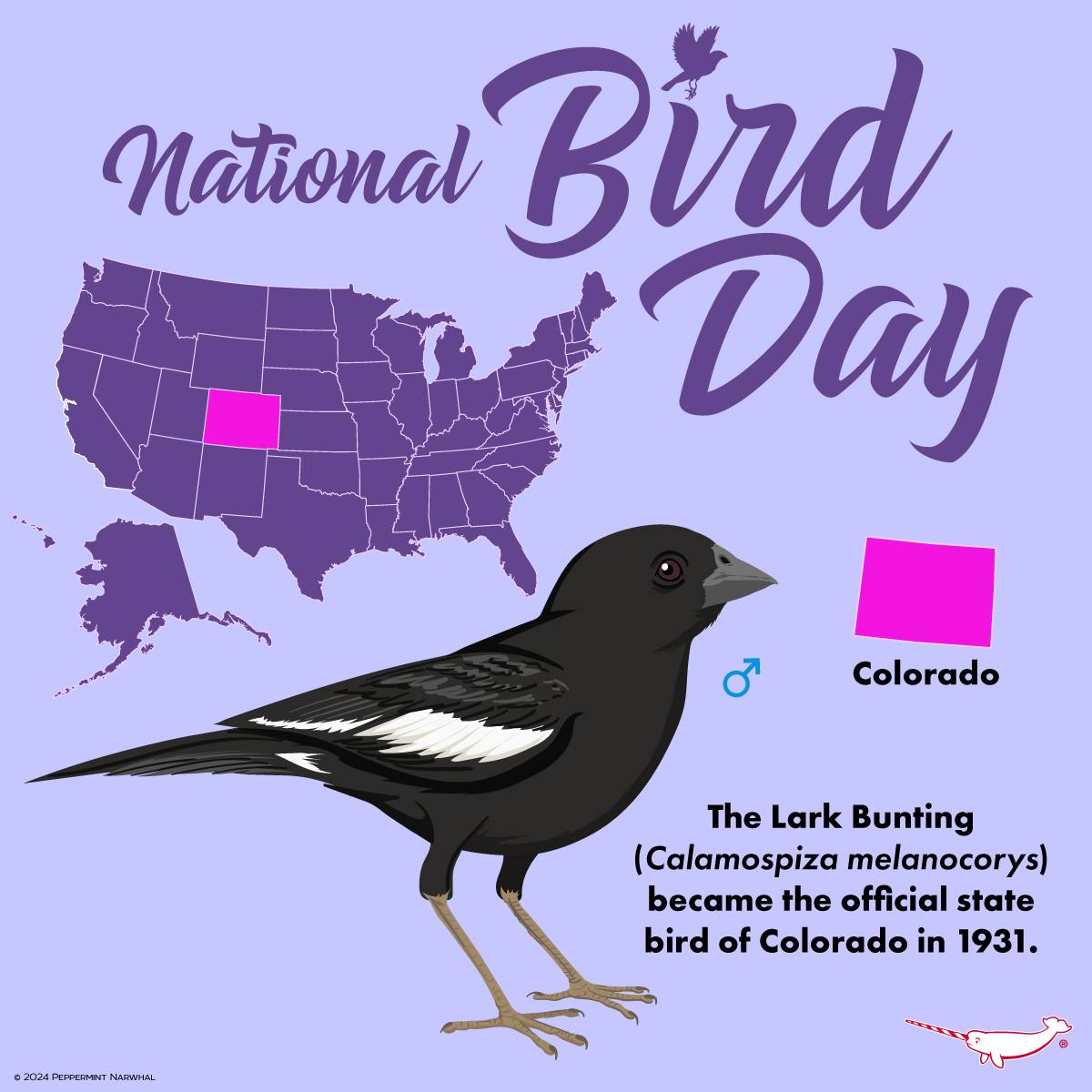– The significance of National Bird Day in promoting bird conservation
– Insights into the life and characteristics of the Lark Bunting (Calamospiza melanocorys)
– The impact of human activities on bird habitats and populations
– Strategies for effective bird conservation
– Ways people can participate in National Bird Day and contribute to bird preservation
National Bird Day plays a crucial role in highlighting the importance of birds to our ecosystems and the pressing need to protect these species and their habitats. This day is an opportunity to educate the public about the challenges birds face, from habitat loss and climate change to illegal pet trade and pollution, and to encourage actions that support bird conservation.
The Lark Bunting, the official state bird of Colorado since 1931, is an excellent example of birds’ beauty and ecological significance to our world. This bird is known for its melodious song and striking black and white plumage in males during the breeding season. The Lark Bunting is a grassland bird, thriving in open spaces where it can find seeds and insects to feed on. These buntings migrate to the southern United States and Mexico for winter, showcasing impressive navigation skills that have fascinated scientists and bird lovers alike.
However, like many bird species, the Lark Bunting faces threats from human activities that alter its natural habitat. The expansion of agricultural lands, urban development, and the use of pesticides all pose significant risks to their population. The decline in their numbers highlights the broader issue of environmental degradation and its impact on bird species globally.
Effective bird conservation requires a multi-faceted approach. Protecting and restoring habitats is fundamental. This can involve legal protections for crucial bird habitats, sustainable land management practices that benefit birds, and restoration projects that rebuild damaged ecosystems. Monitoring bird populations is also key to understanding their health and trends, guiding conservation actions where they are most needed.
Individuals can contribute meaningfully to bird conservation, especially on National Bird Day. Actions can include participating in bird counts, which help gather valuable data on bird populations; creating bird-friendly spaces in gardens and communities by planting native vegetation and setting up bird feeders; and supporting conservation organizations financially or through volunteer work. Education and advocacy are also powerful tools, as raising awareness about the challenges birds face can lead to broader support for policies and practices that protect these creatures.
National Bird Day not only celebrates the beauty and diversity of birds but also serves as a call to action to protect these vital members of our ecosystems. With its distinctive song and presence, the Lark Bunting exemplifies the wonders of the avian world and the urgent need to safeguard these species for future generations. By understanding the threats birds face and implementing effective conservation strategies, we can ensure that the skies remain filled with the sights and sounds of our feathered friends. Participation in National Bird Day is a step towards this goal, offering everyone a chance to contribute to the preservation of bird species and the health of our planet.
*****
Source Description
Happy National Bird Day!
The Lark Bunting (Calamospiza melanocorys) became the official state bird of Colorado in 1931.
If you didn’t know it was National Bird Day,, you need the 2024 Peppermint Narwhal Animal Holiday Calendar. Shop now at the Store:
www.peppermintnarwhal.com.


